Chloride is a common anion that combines with minerals like sodium, calcium, and magnesium to form salts. It’s most often found in groundwater supplies – so if you have a private well, your water probably contains chloride.
Chlorides are harmless in low concentrations, but large amounts may affect your water taste and damage your plumbing.
Here, we’ve shared the best methods of removing chloride from your water.
📌 Key Takeaways:
- Chloride is an anion that’s naturally present in all water bodies, including rivers, streams, and groundwater supplies.
- While chloride isn’t harmful to human health in low concentrations, it may affect water taste and increase its corrosive properties, leading to metal leaching from your pipes and plumbing.
- The best chloride removal technologies are reverse osmosis systems, water distillers, and deionization systems.
Table of Contents
- 🤔 What Is Chloride?
- 🚱 How Does Chloride Get Into Drinking Water?
- ⚠️Is Chloride In Water Harmful?
- 🩺 Effects Of Chloride In Your Home
- 🧪 How To Test For Chloride In Water
- ⚗️ How To Remove Chloride From Drinking Water
- ⛔ Which Methods CAN’T Remove Chloride From Water?
- 🔎 Factors That Affect Chloride Removal Process
- 📑 Final Word
🤔 What Is Chloride?
Chloride is an anion that’s commonly found in all tap water supplies, especially well water.
It combines with different minerals to form salts (for example, chloride and sodium combined form sodium chloride).
Don’t confuse chloride with chlorine. While both are made from the same element, chloride can’t be used to disinfect water because it isn’t reactive enough.
Chloride has a wide range of commercial and industrial uses. It’s used to make chlorine, de-ice roads, and treat industrial wastewater. Potassium chloride is used to make fertilizers.
In low levels, chloride isn’t harmful to health. However, it has several aesthetic effects, which we’ve discussed in more detail later.
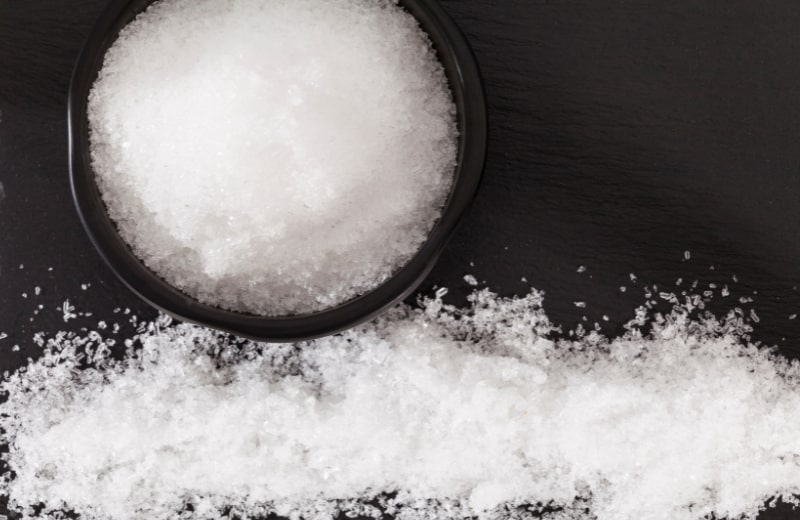
🚱 How Does Chloride Get Into Drinking Water?
Chloride is present naturally in most groundwater supplies. It enters water as a result of seepage – when water flows through layers of rocks and soils, picking up chloride as it travels into the aquifer.
Chloride is found in greater concentrations in well water supplies that are located near sea water and other saltwater bodies, as well as wells near salt storage facilities or wells in snowy regions where the roads are regularly treated with salts for de-icing.
⚠️Is Chloride In Water Harmful?
Chloride in water isn’t harmful in naturally present concentrations.
However, elevated chloride levels are associated with elevated levels of sodium (salt), and high sodium levels are dangerous.
Potential health effects of ingesting very high concentrations of sodium chloride in water are nausea, vomiting, thirst, and convulsions.
In the long term, consuming elevated levels of sodium chloride increases your likelihood of developing hypertension (high blood pressure) and may complicate existing cardiovascular issues.
If your water has high concentrations of sodium, it’ll taste salty, like seawater – so you should know about the problem.
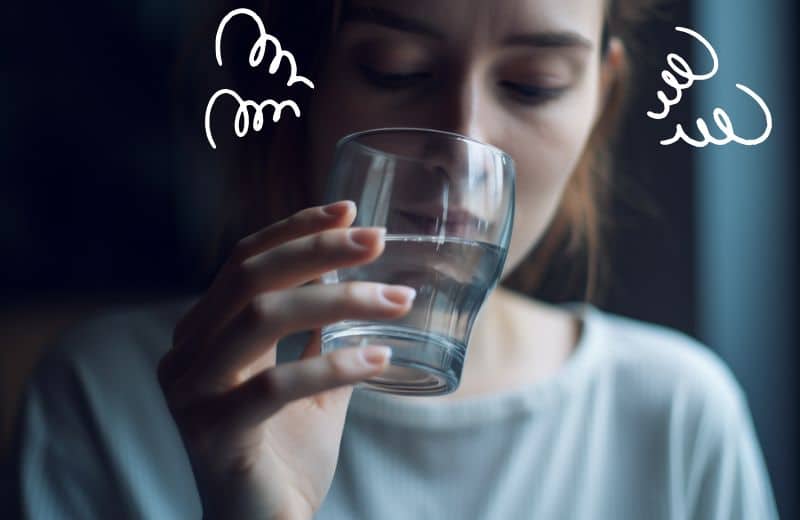
🩺 Effects Of Chloride In Your Home
Chloride is more likely to have aesthetic effects than health effects in your water.
These include:
- Unpleasant water taste – Elevated chloride levels may give your water an unpleasant taste.
- Corrosion of pipes & plumbing – If your water supply contains sodium chloride ions, it’ll have corrosive properties and may damage your appliances, pipes, fixtures, and water heater. Depending on what your plumbing and fixtures are made from, this could lead to elevated levels of lead or copper in your water.
- Stunted plant growth – If you use water that’s high in chlorides to water your plants, the chloride may reduce the size of plant cells and reduce growth.
The exact effects of chloride in your home and garden depends on which minerals are present alongside the chloride and the concentrations of chloride detected.
🧪 How To Test For Chloride In Water
You can test for chloride in water with a laboratory water test.
The laboratory will send you the items you need to take samples of your tap water, including vials for collecting your samples and a shipping label for returning the samples via post.
After returning your samples to the laboratory, you’ll need to wait until the results are delivered via email (typically within 7-14 days).

How much chloride is potentially dangerous? Chloride itself isn’t regulated by the Environmental Protection Agency (EPA), but the EPA does recommend that chloride levels are within 250 mg/L in drinking water. So, if your water’s chloride concentrations are higher than this, you should react accordingly.
⚗️ How To Remove Chloride From Drinking Water
Here are our top three recommended methods of removing chloride from drinking water.
Reverse Osmosis
This method of chloride removal consists of several filtration stages:
- A sediment pre-filter
- A carbon pre-filter
- A reverse osmosis membrane
- A carbon post-filter
It’s the semi-permeable membrane in an RO system that’s responsible for the removal of chloride. Membrane separation is a process in which water molecules are separated from all the dissolved solids, including minerals and salts.
Reverse osmosis is effective enough to remove up to 99.9% of all total dissolved solids. These impurities are sent down a waste pipe with a small amount of wastewater.
You can install a point-of-use reverse osmosis system underneath your kitchen sink or on a countertop. There are also whole-home RO systems available, but these aren’t super popular because they’re very expensive.
Continue Reading: Find Out Which Reverse Osmosis Systems Excel in Chloride Reduction
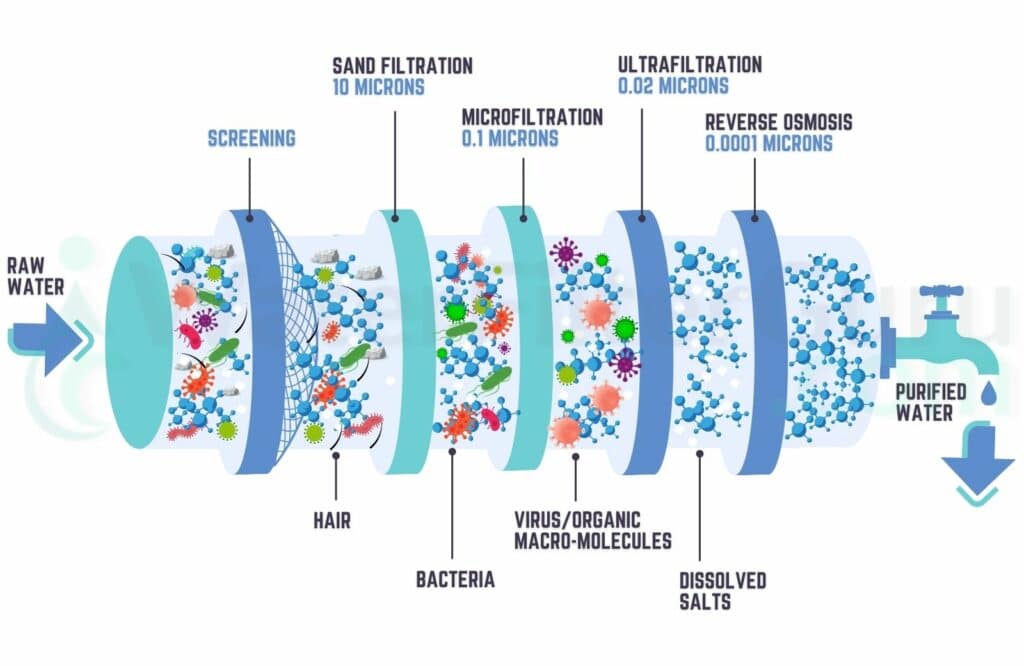
Water Distillation
Water distillers are another effective chloride removal solution.
Like a reverse osmosis system, a water distiller is capable of removing the majority of dissolved solids from a tap water supply. The treated water is pure, meaning it contains no or very few impurities.
A distiller boils water until it vaporizes. Minerals, salts, and chloride ions are unable to evaporate at water’s boiling point, so they’re left behind in the boiling chamber. The water vapor is funneled into a separate container, where it condenses drop by drop.
Most water distillers for household use are countertop units that can purify around 1 gallon of water at a time. The distillation process takes around 4-5 hours for a single batch of water, so the biggest setback of this method is that it doesn’t provide purified water on demand.
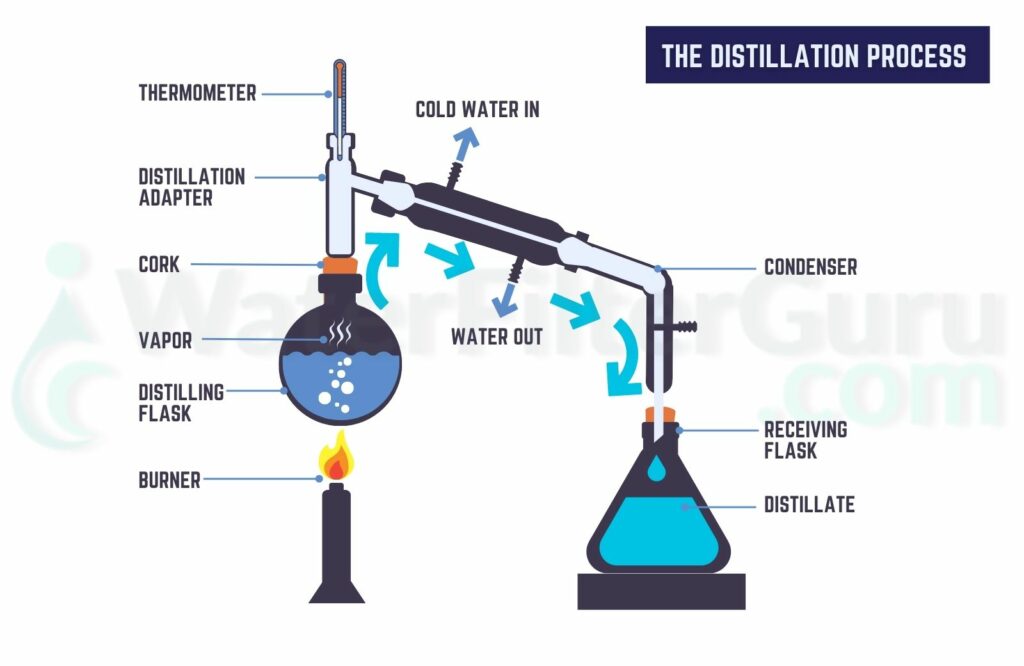
Deionization
A deionization (DI) system collects chloride ions on an anion-exchange resin, removing them from water.
The DI process also removes other anions from water, including sulfate, and other ionized minerals and salts.
There are a couple of setbacks of deionization:
- First, this process ONLY removes charged ions, so it won’t remove other dissolved contaminants with health risks.
- Secondly, high concentrations of sulfate will reduce the effectiveness of the resin, so you may need to use a pre-treatment system if your water contains a lot of sulfate.
Most deionization units are countertop systems, but there are also point-of-entry systems that treat your entire home’s water supply.
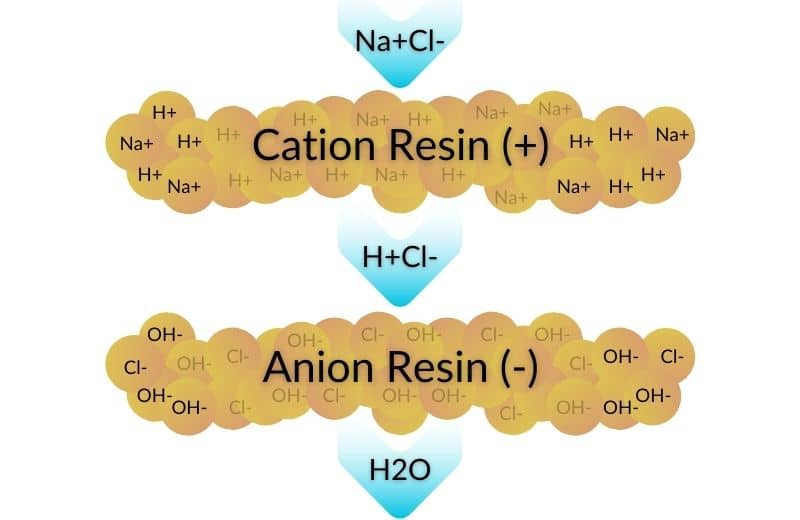
⛔ Which Methods CAN’T Remove Chloride From Water?
Basic filters can’t be used to remove chloride from water. These include:
- Activated carbon filters
- Ceramic filters
- KDF filters
Chloride is an anion, which means it can only be removed by a water treatment process that’s capable of removing charged ions, minerals, and salts.
Boiling your water also won’t remove chloride. When water is heated to boiling, some of the water molecules will evaporate, leaving the same amount of chloride in a smaller volume of water.
Finally, water softeners will not remove chloride from water. Water softeners are designed to eliminate calcium and magnesium minerals, but they won’t remove chloride on its own.
🔎 Factors That Affect Chloride Removal Process
There are a few factors that may affect the chloride removal efficiency of an at-home treatment system:
- Other contaminants in your water – Certain other water contaminants may affect a filter’s removal abilities or clog/foul the filter media or membrane. You may need to install a pre-filter, depending on what your water contains.
- Water flow – Some chloride removal systems, like reverse osmosis filters, need fast-flowing water to effectively remove contaminants without wasting too much water. Boosting the incoming water pressure is a simple method of improving removal efficiency and limiting water waste.
- System capacity/lifespan The capacity and lifespan of the filters/resins in chloride removal systems determine how long they can effectively reduce chloride before they become ineffective. You can replace the filters to sustain effective chloride removal in the long run.
📑 Final Word
Chloride isn’t one of the most dangerous drinking water contaminants as far as human health is concerned, but it can still be problematic in drinking water.
Hopefully, you’re now equipped with the knowledge you need to decide whether or not you need a water treatment system for removing chloride, and if so, which method of removal is best for you.

